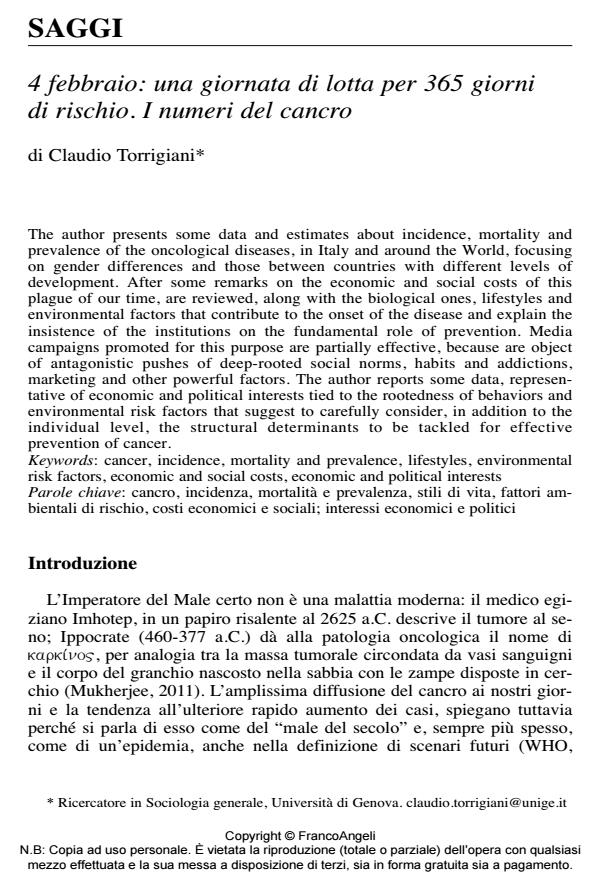4 febbraio: una giornata di lotta per 365 giorni di rischio. I numeri del cancro
Titolo Rivista SALUTE E SOCIETÀ
Autori/Curatori Claudio Torrigiani
Anno di pubblicazione 2015 Fascicolo 2015/2
Lingua Italiano Numero pagine 18 P. 19-36 Dimensione file 96 KB
DOI 10.3280/SES2015-002003
Il DOI è il codice a barre della proprietà intellettuale: per saperne di più
clicca qui
Qui sotto puoi vedere in anteprima la prima pagina di questo articolo.
Se questo articolo ti interessa, lo puoi acquistare (e scaricare in formato pdf) seguendo le facili indicazioni per acquistare il download credit. Acquista Download Credits per scaricare questo Articolo in formato PDF

FrancoAngeli è membro della Publishers International Linking Association, Inc (PILA)associazione indipendente e non profit per facilitare (attraverso i servizi tecnologici implementati da CrossRef.org) l’accesso degli studiosi ai contenuti digitali nelle pubblicazioni professionali e scientifiche
The author presents some data and estimates about incidence, mortality and prevalence of the oncological diseases, in Italy and around the World, focusing on gender differences and those between countries with different levels of development. After some remarks on the economic and social costs of this plague of our time, are reviewed, along with the biological ones, lifestyles and environmental factors that contribute to the onset of the disease and explain the insistence of the institutions on the fundamental role of prevention. Media campaigns promoted for this purpose are partially effective, because are object of antagonistic pushes of deep-rooted social norms, habits and addictions, marketing and other powerful factors. The author reports some data, representative of economic and political interests tied to the rootedness of behaviors and environmental risk factors that suggest to carefully consider, in addition to the individual level, the structural determinants to be tackled for effective prevention of cancer.
Parole chiave:Cancro; incidenza, mortalità e prevalenza; stili di vita; fattori ambientali di rischio; costi economici e sociali; interessi economici e politici
Claudio Torrigiani, 4 febbraio: una giornata di lotta per 365 giorni di rischio. I numeri del cancro in "SALUTE E SOCIETÀ" 2/2015, pp 19-36, DOI: 10.3280/SES2015-002003